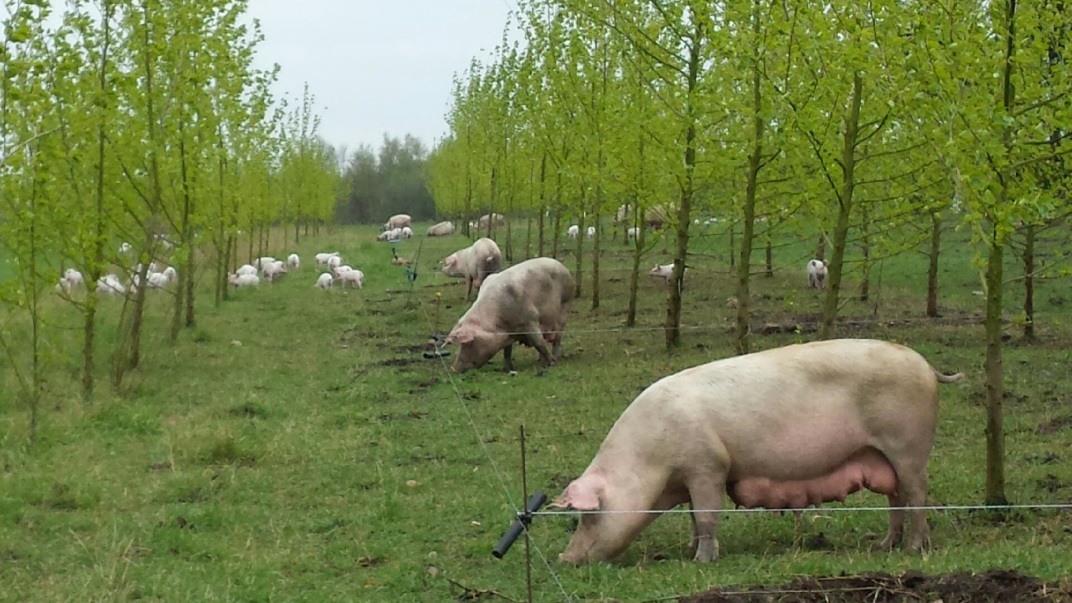
Free-range pigs integrated with energy crops
Description of system
Integrating trees with pig production can increase the productivity of the land whilst also providing other ecosystem services and environmental benefits compared to separate agricultural and woodland systems. Combinations of free-range pigs and energy crops have been found to reduce the risk of nutrient leaching and clear benefits to animal welfare, providing a more stimulating environment for pigs, and offering shelter from extremes of weather. A few organic pig producers in Denmark have established energy crops (willow and poplar) in paddocks for lactating sows, but the knowledge and experience of the management and design of such systems is still sparse. The objective of the stakeholder group is to identify important challenges in terms of implementing integrated free-range pig and energy crop production in practice. If you would like to know about the activity of this group, please contact Dr. Anne Kongsted(anneg.kongsted@agro.au.dk).
Initial stakeholder meeting
The first stage in developing a participatory research and development network (PRDN) was to hold interviews with two large scale pig producers who have already established energy crops in paddocks for free range pigs. The two producers were interviewed separately since a joint meeting was not possible. The positive benefits of the systems were considered by the farmers to be improved animal health and welfare, landscape aesthetics, reduced nutrient leaching and ammonia losses, and enhanced biodiversity. The key negative issues were the administrative burden and labour requirements. The key challenges and constraints included the fencing of the paddocks, restrictions in machinery access, and the uncertainty over the profitability of the system. Potential innovations that were highlighted in the interviews were the development of machinery suitable for harvesting energy crops 1.20 m above ground (this height is needed to avoid pigs eating the new sprouts after harvesting), and the trial of new woody species that could offer nutritional benefit to pigs, and which could be grown between the poplar and willow.
See a video from one of the farm
here
Download the initial stakeholder report
Download the initial research and development protocol
An initial research and development protocol was produced in March 2015.
Download the system description
A system description report providing an update on research with free-range pigs and energy crops in Denmark was produced in October 2015.
Lessons learnt
In a report produced in July 2017, Anne Grete Kongsted with colleagues describes the results of the experimental work. The presence of trees was found to reduce the leaching of nitrate from the pig paddocks. This is related to either a high uptake of N by the trees or reduced percolation of water due to tree water update. When the trees are placed at the end of a paddock with sows, the majority of urine and manure continues to be deposited outside the tree area. The strategic placement of the hut and feeding trough can increase the proportion that is deposited in the tree area. From 2018, it will be mandatory in Danish organic pig production for outdoor pigs to have access to shade, in addition to the provision of huts. Establishment of trees in the paddocks seems an appropriate way to comply with this requirement.